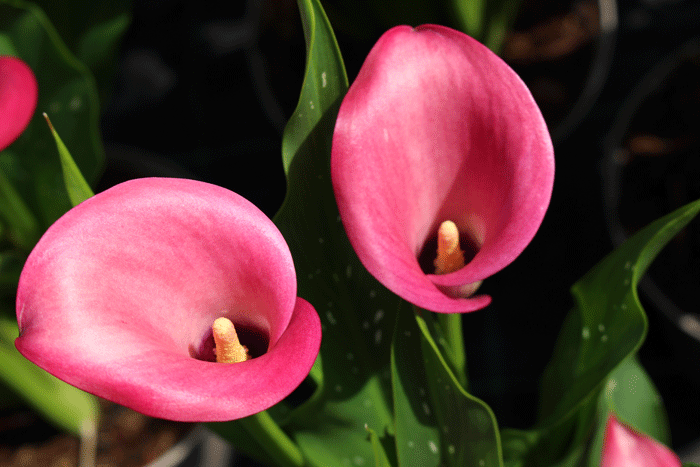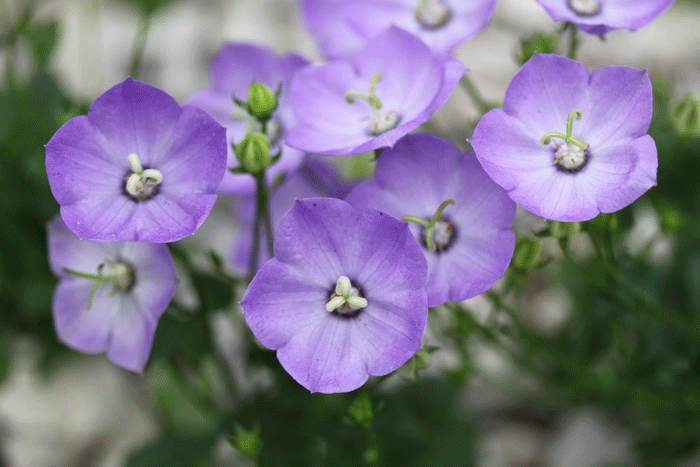Plant Heritage Missing Genera campaign
Plant Heritage, a leading horticultural conservation charity, is calling for volunteers in all corners of the UK to help save ten different plant groups at risk of being lost from our gardens.
Anyone with a passion for plants is being asked to consider looking after a specific plant group as part of the annual Missing Genera campaign run by the charity. Each year the campaign showcases different plant groups that aren’t being cared for as part of a National Plant Collection. If plants are not being actively conserved in these collections, they are at risk of disappearing from cultivation.
Since the start of the annual campaign in 2016, eight new National Plant Collections conserving over 650 species and cultivars, including Hollyhocks and Aeonium, have been created.
Vicki Cooke, Conservation Manager at Plant Heritage explains: “Starting a National Plant Collection doesn’t have to be daunting – in fact, we have several that are cared for in homes, conservatories and gardens! Anyone can help, and by caring for a plant group means that future generations can enjoy them as much as we do now. What matters is that the interest and love for saving a plant is there, so we really hope the ten plants on this year’s Missing Genera list find their future Collection Holder soon.”
Visitors to this year’s RHS Hampton Court Palace Garden Festival (6th to 11th July) will be able to see all ten plants listed on the Missing Genera list in the Plant Heritage Zone in the floral marquee. They will also be able to speak to a member of the Plant Heritage team to find out how to start a National Plant Collection.
This year (2021)the ten plant varieties in need of a home are outlined below:
Campanula: (pictured above) Also known as bellflowers, these distinctive open, bell-shaped flowers come in shades blue, pink, purple and white, and range from creeping alpine plants to tall border favourites. There are about 80 species and a staggering 232 cultivars available, but it would be possible to look after a subset to avoid collecting them all!
Erigeron: Related to daisies, Erigeron can be annuals, biennials or perennial. They thrive in sunny spots with some happily growing through the cracks in paving. There are 30 cultivars currently available in the UK, with many more to be found worldwide.
Lysimachia: From creeping, ground cover plants to stately perennials, this genus can survive in a variety of settings. The UK native species have yellow flowers, but the garden types include whites and deep maroons.
Papaver (Oriental Group): These pretty perennial poppies are a stalwart of early summer. Since the 19thcentury oriental poppies have been bred to produce a range of coloured flowers, from pastel shades to deep plums, in addition to their original red.
Phormium: Also called New Zealand flax, this vigorous, easy to grow plant looks good all year round. Good for windy or coastal sites, the long, strap-like leaves vary from deep purples to reds and yellows, and can also be striped. There are about 60 cultivars available.
Phygelius: These are low growing evergreen shrubs but are often treated as perennials. The tubular flowers are held on long stems and come in stunning tones of pink, red and occasionally yellow, and will last from mid-summer into the autumn.
Pittosporum: The glossy, evergreen leaves are the standout feature of these shrubs or small trees, which can be used for hedging, ground cover or as specimen plants. The small flowers can be scented and are produced in late spring to early summer.
Sansevieria: These make popular houseplants due to their tolerance for low light. Also known as ‘mother-in-law’s tongues’, the upright, leathery leaves come in many patterns of variegation.
Silene: Some Silene are familiar wildflowers, also known as ‘campions’ or ‘catchflys’. There are many other species to be found in the UK, from alpines to border perennials. The colour palette of Sileneranges from pinks, lilacs, whites and reds, and they flower from late spring through early summer.

Zantedeschia: (pictured above) Commonly called arum lilies, these hardy, outdoor plant tends to have white flowers and thrive in damp places. There are also more tender forms that come in a range of colours. There are about 70 cultivars available of these dramatic plants in the UK.
Plant Heritage has 674 National Plant Collections that showcase the stunning range of plants grown in the UK. They are “living libraries” and ensure that plants are not lost once they are no longer available from nurseries or have fallen out of fasion.
To find out more about the Missing Genera, visit: https://www.plantheritage.org.uk/national-plant-collections/missing-genera/ and to find out how to start a National Plant Collection of one of the above plant groups, visit: https://www.plantheritage.org.uk/national-plant-collections/start-a-national-plant-collection
Picture credits:©Plant Heritage; Zantedeschia ‘Zazu’ ©credit Brighter Blooms.



